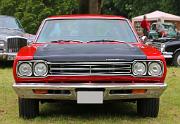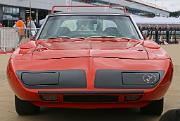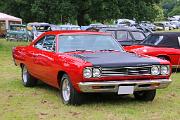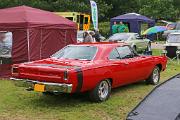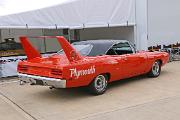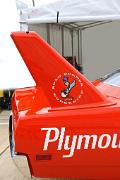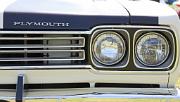
aa Plymouth Road Runner 1969 Hardtop 383 badgep
Plymouth Road Runner 1969 Hardtop 383 - badge on bonnet
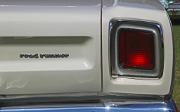
aa Plymouth Road Runner 1969 Hardtop 383 badger
Plymouth Road Runner 1969 Hardtop 383 - badge on bootlid
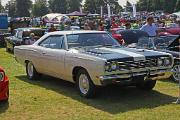
Plymouth Road Runner 1969 Hardtop 383 front
Plymouth Road Runner 1969 Hardtop 383. Standard power for the first Road Runner was the 383 6.3-litre 330bhp V8 engine
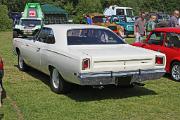
Plymouth Road Runner 1969 Hardtop 383 rear
Plymouth Road Runner 1969 Hardtop 383. The Road Runner shared its B-body with the Plymouth Belvedere (and also Dodge Coronet/Dodge Charger)
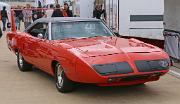
Plymouth Road Runner 1970 Superbird front
Plymouth Road Runner 1970 Superbird. The Superbird's nosecone meant that the car was 19-inches longer than standard. Dodge first worked out a Charger Daytona with these aerodynamic appendanges, and the Plymouth benefitted from that study and improved on it. The scoops on the top of the wings are actually to give clearance for the tyres on the racing versions.
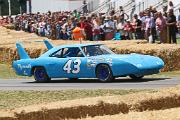
Plymouth Road Runner 1970 Superbird racer 43
Plymouth Road Runner 1970 Superbird racer 43. Plymouth developed a special version of the Road Runner with aerodynamics which made it good for 200mph. It has been said this was done to entice Richard Petty back to race Plymouths. This car carries Petty's No '43'

s Plymouth Road Runner 1970 Superbird side
Plymouth Road Runner 1970 Superbird. Approximately 1,935 Superbirds were built, in response to a NASCAR ruling that 1,920 should be build for the homologation of the racing version.
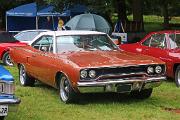
Plymouth Satellite 1970 front
Plymouth Satellite 1970, with Chrysler 318 (5,211cc V8). This engine was also fitted to the Bristol 603E
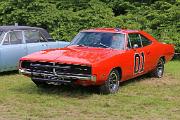
Dodge Charger 1969 front
Dodge Charger 1969. The 'Charger' name debuted on a 1966 Dodge and formed a whole line up on the new 1968 B-body Dodges. A range of engines was offered on the Dodge Charger, including the surprise of a slant-6 on such a performance car
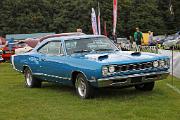
Dodge Coronet 383 Magnum 1968 front
Dodge Coronet 383 Magnum 1968. The 'Magnum' version of the Coronet had a 383 cu in (6.3-litre V8) engine, but there were higher performance versions including the R/T models and the Super Bee models.
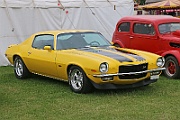
Chevrolet Camaro 1970 Z28 front
Chevrolet Camaro 1970 Z28. Offered for the first time, the Z-28 was a performance package for the Camaro using the LT-1 5.7-litre V8 engine from the Corvette, with 4-barrel carbs and 360bhp (350 after 1971)
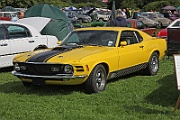
Ford Mustang 1970 Mach 1 351 front
Ford Mustang Mach 1 351 1970. Ford introduced the Mach 1 for the 1969 model year based only on the 'sportsroof' (fastback) body. A 351 cu.in 5.8-litre Windsor V8 powered the Mach 1, although other engines were optional. Sales of 72,000 Mach 1s saw the GT model (5,400) pulled in favour of the Mach 1 for 1970. The 1970 Mach 1 got a 5.8-litre Cleveland 351 cu.in. V8 in 2-barrel or 4-barrel tune. When the Mustang II was launched in 1974 a Mach 1 edition was also offered.
